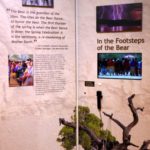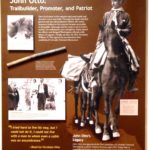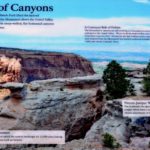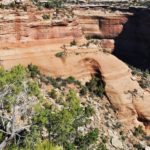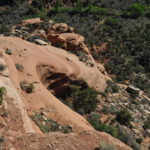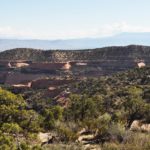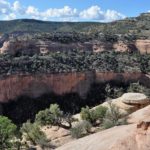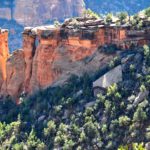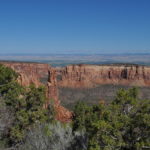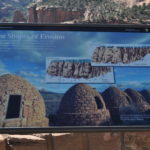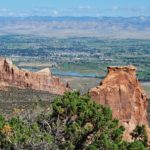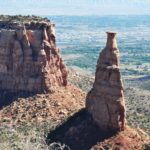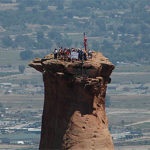The vast Colorado Plateau extends into four states: CO, UT, AZ and NM. Both Arches and Canyonlands are in it, as are Dinosaur NM, Capitol Reef NP, and Mesa Verde NP.
It was a short hop from Moab over Colorado. We had explored the eastern foothills of the Colorado Rockies during The Journey, but curiosity about the western side kept them on our list. So here we were, in Grand Junction, home to the Colorado National Monument, the 25th unit of the National Park System.
The Colorado National Monument is drive-able via Rimrock Road, a 23 mile breathtaking and spine-chilling ride with a view of all the major features. There are numerous hiking trails within it, but no additional vehicle access for four-wheelers. Rimrock Road is not a circuit; it extends from Grand Junction up to Fruita, and its 23 mile length connects cities that are actually just 8 miles apart. Started in the 1930’s by the WPA/CCC, it was eventually completed in 1950 after a time out for war.
Each July 4th, daring climbers ascend Independence Monument. It was first ascended by John Otto, who explored the canyon 1907 and prevailed upon Washington to protect it. It was declared a National Monument in 1911 by President Taft. Otto was the park ranger for the next 16 years. Today, scaling the 450 foot obelisk rising from the canyon floor involves a combination of events, ending with the planting an American flag on its summit.
- As we saw it!
- July 4th on Independence (NPS photo)
The Colorado Monument is simply another view of the scale and complexity of our national landscape. It’s not the first time, by far, that we’ve gazed down into Earth’s wonders rather than looking up at them. It’s this kind of variety that keeps us searching for more.

